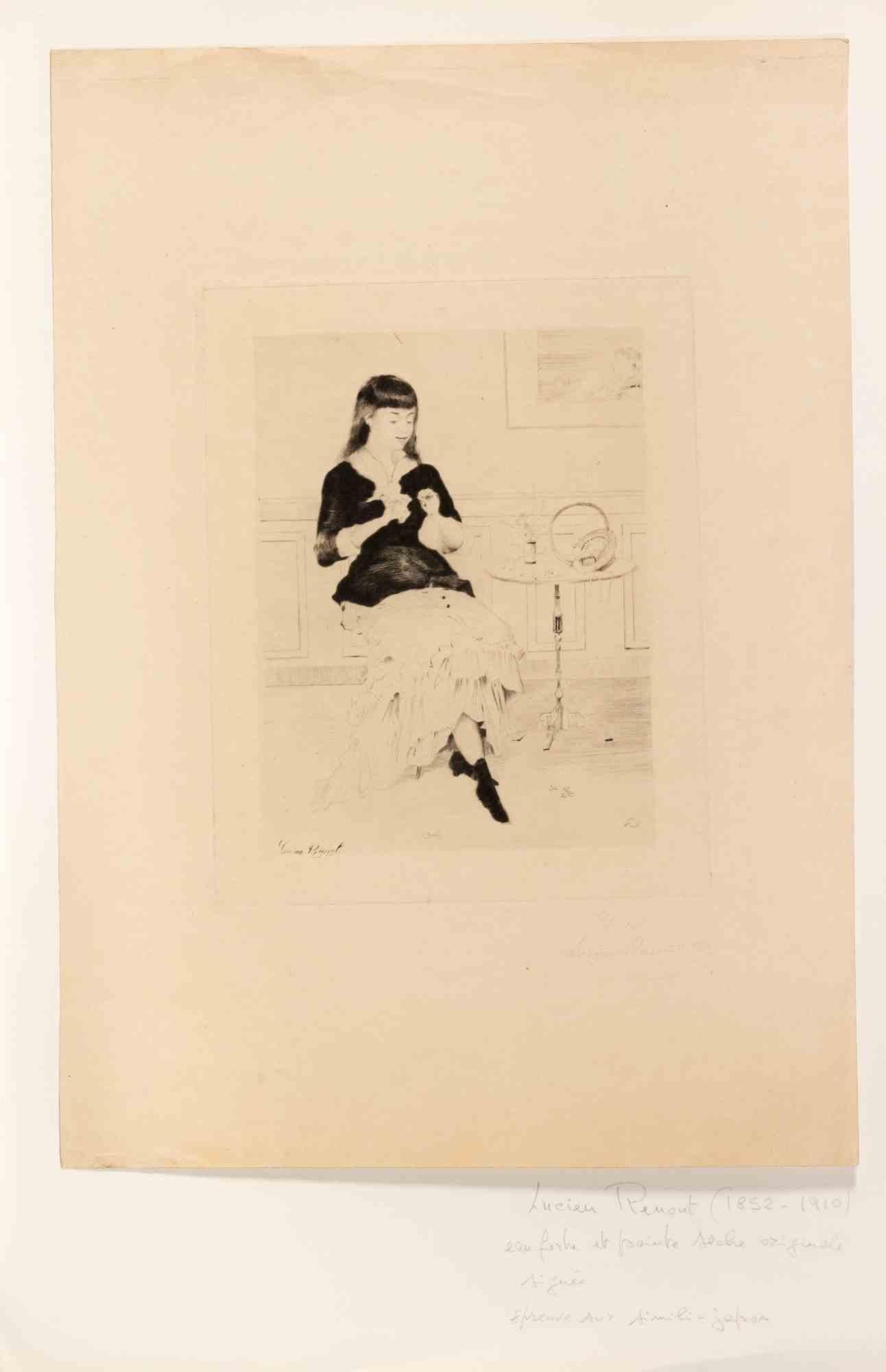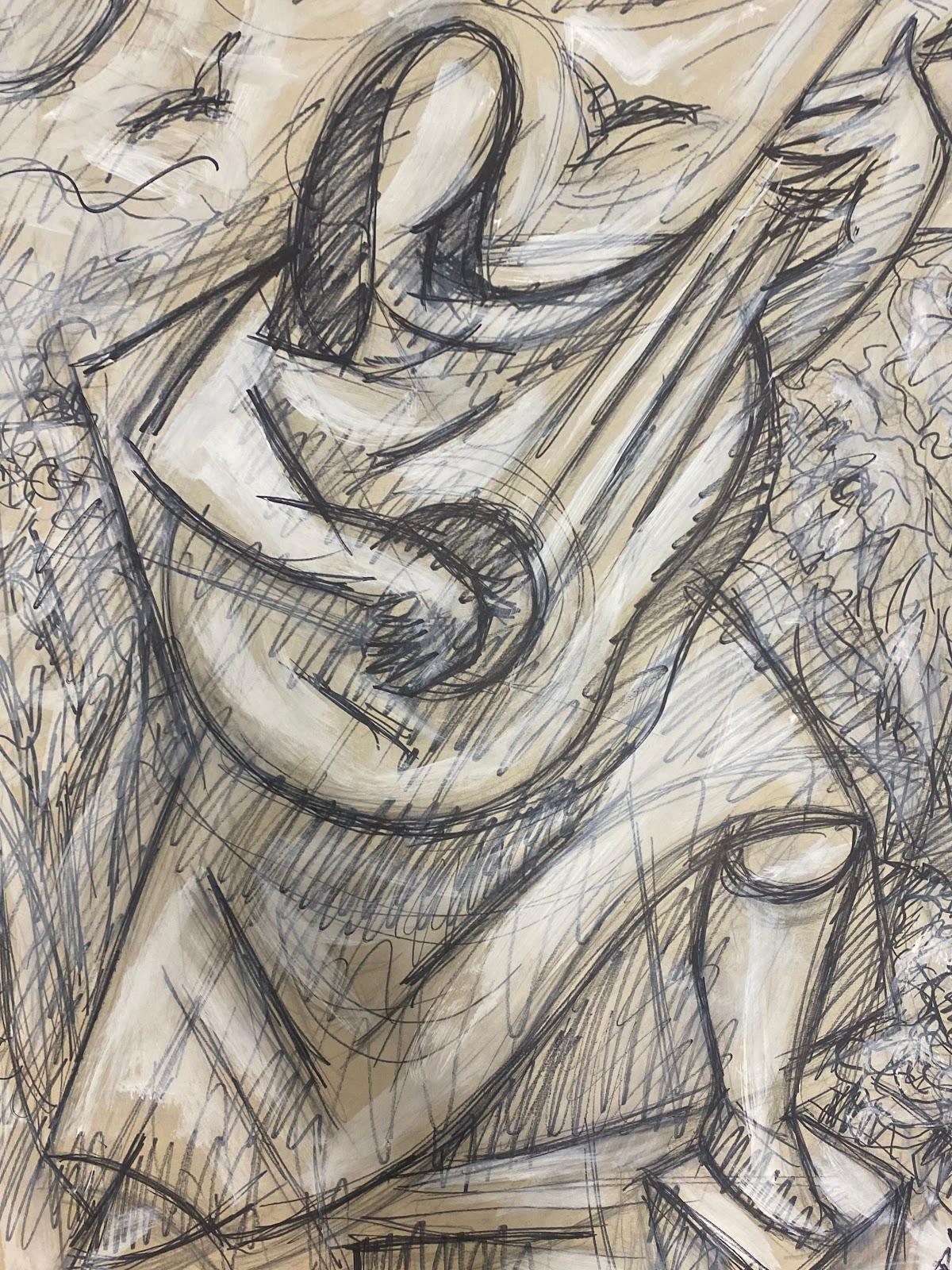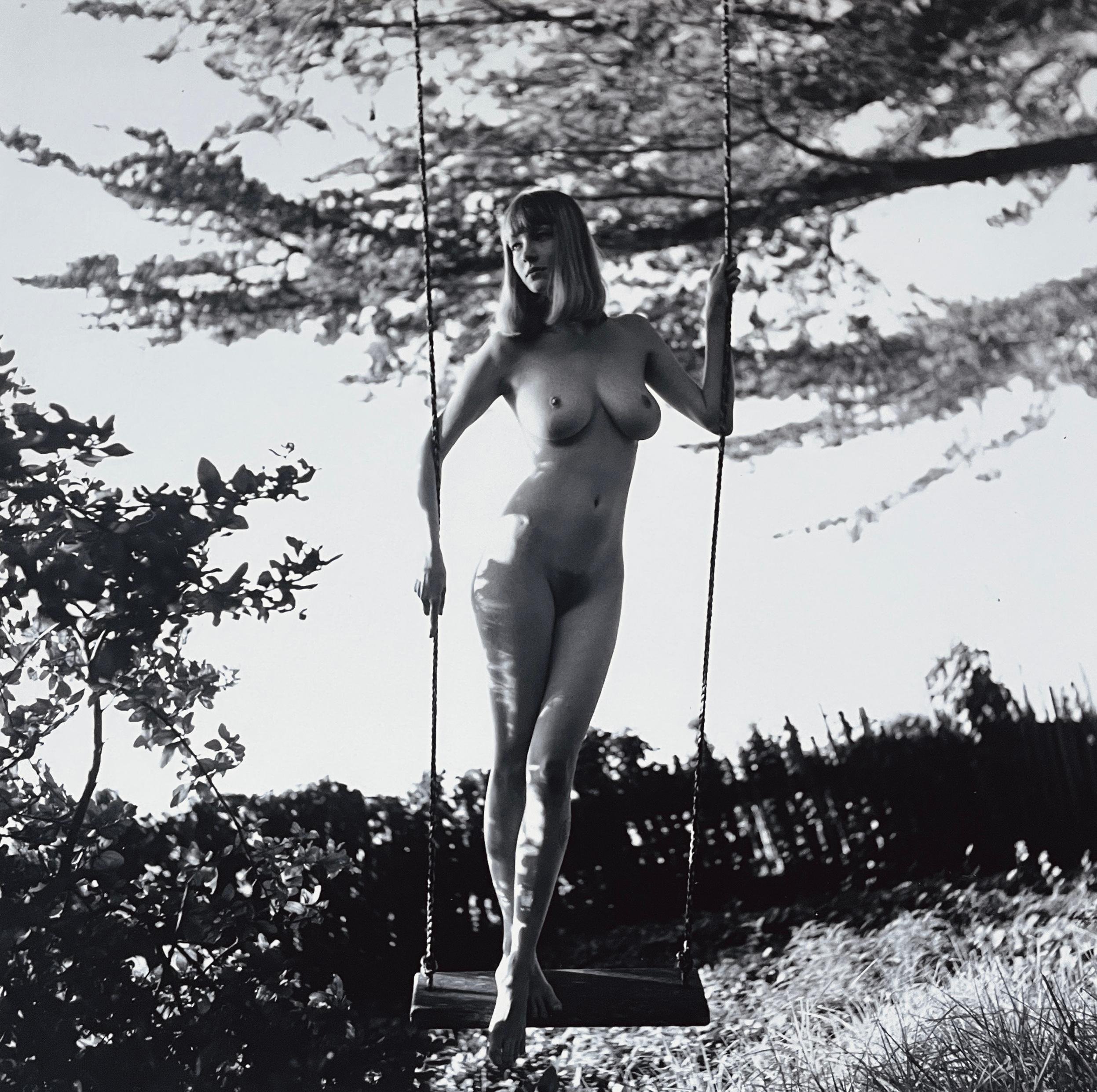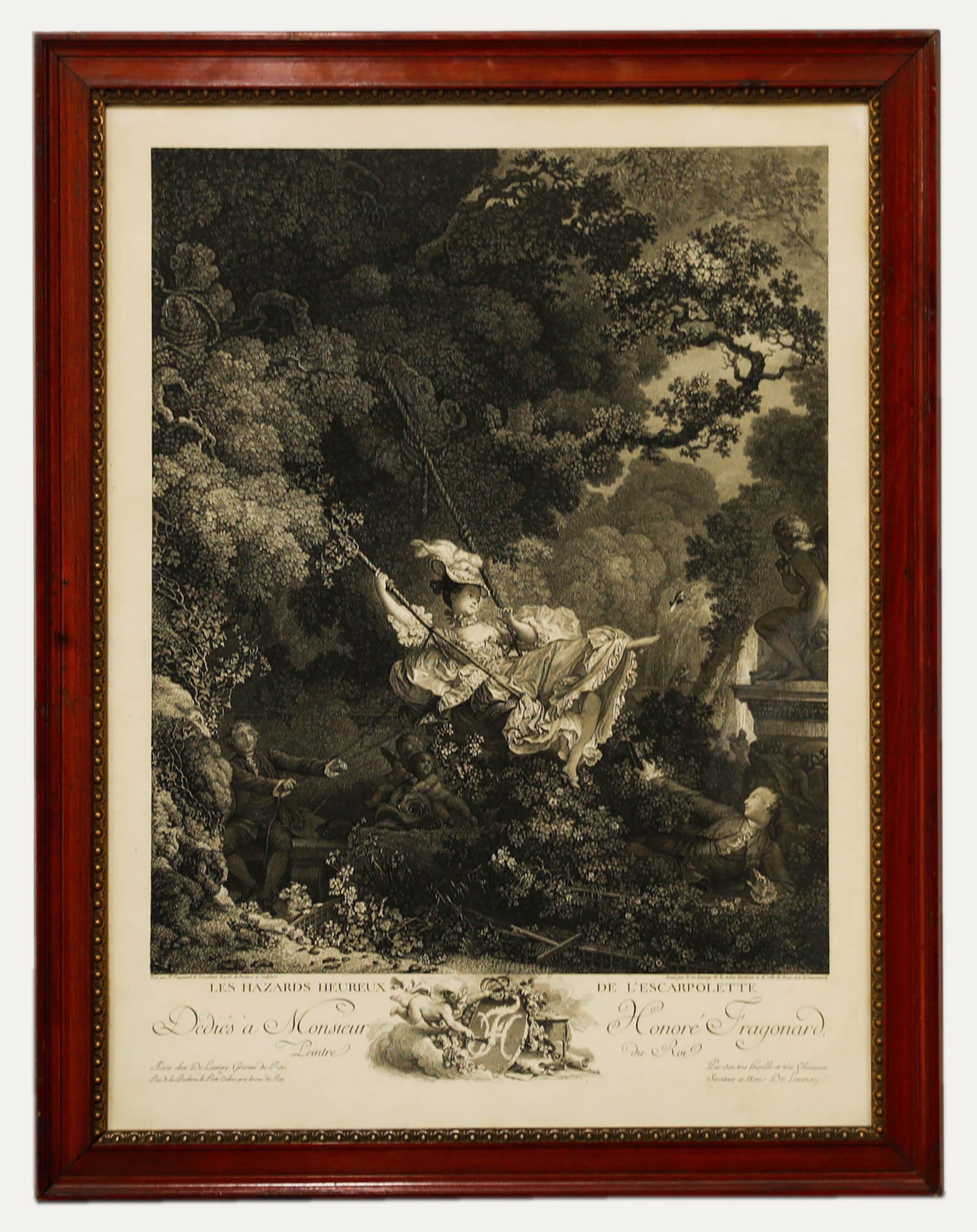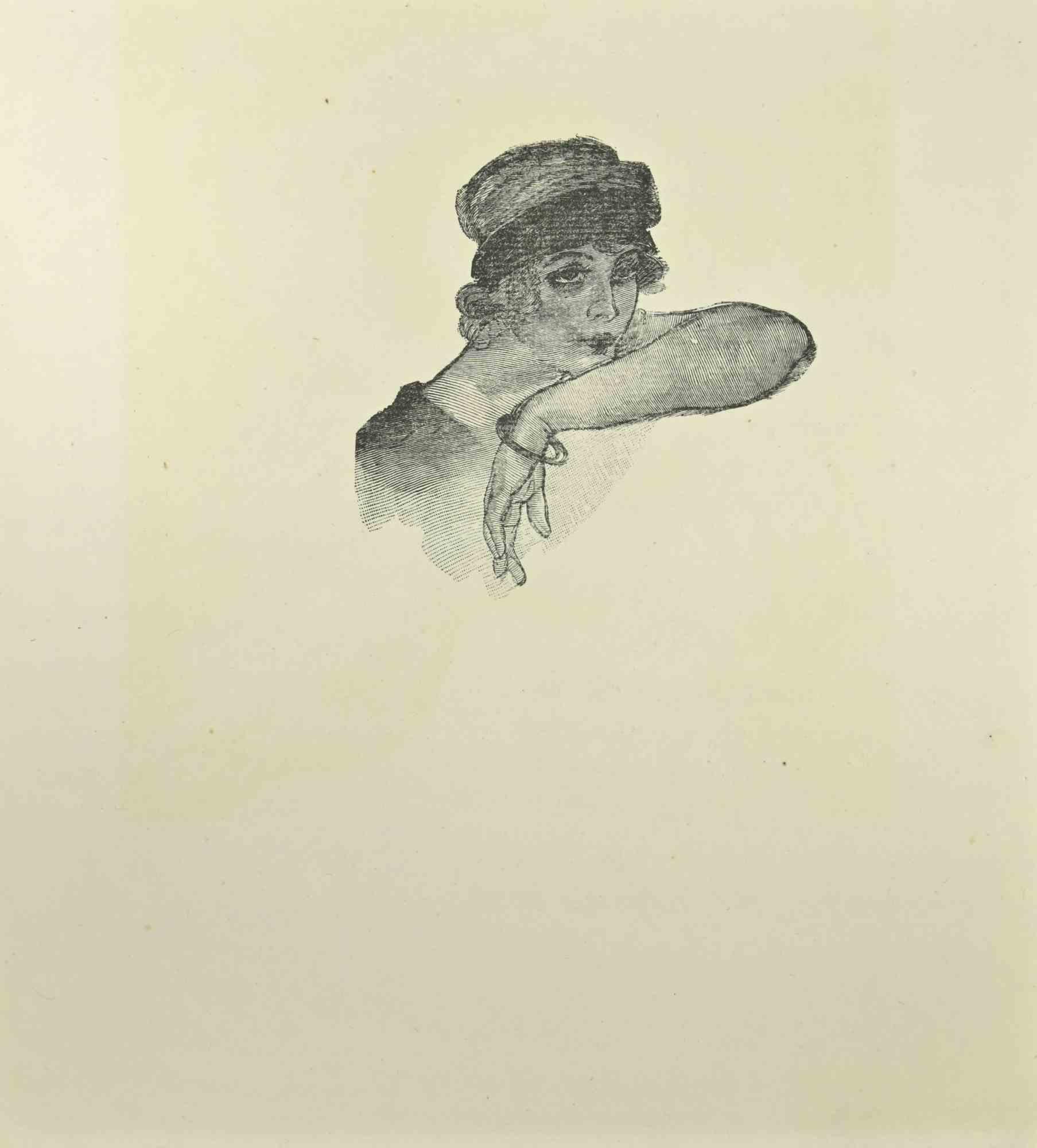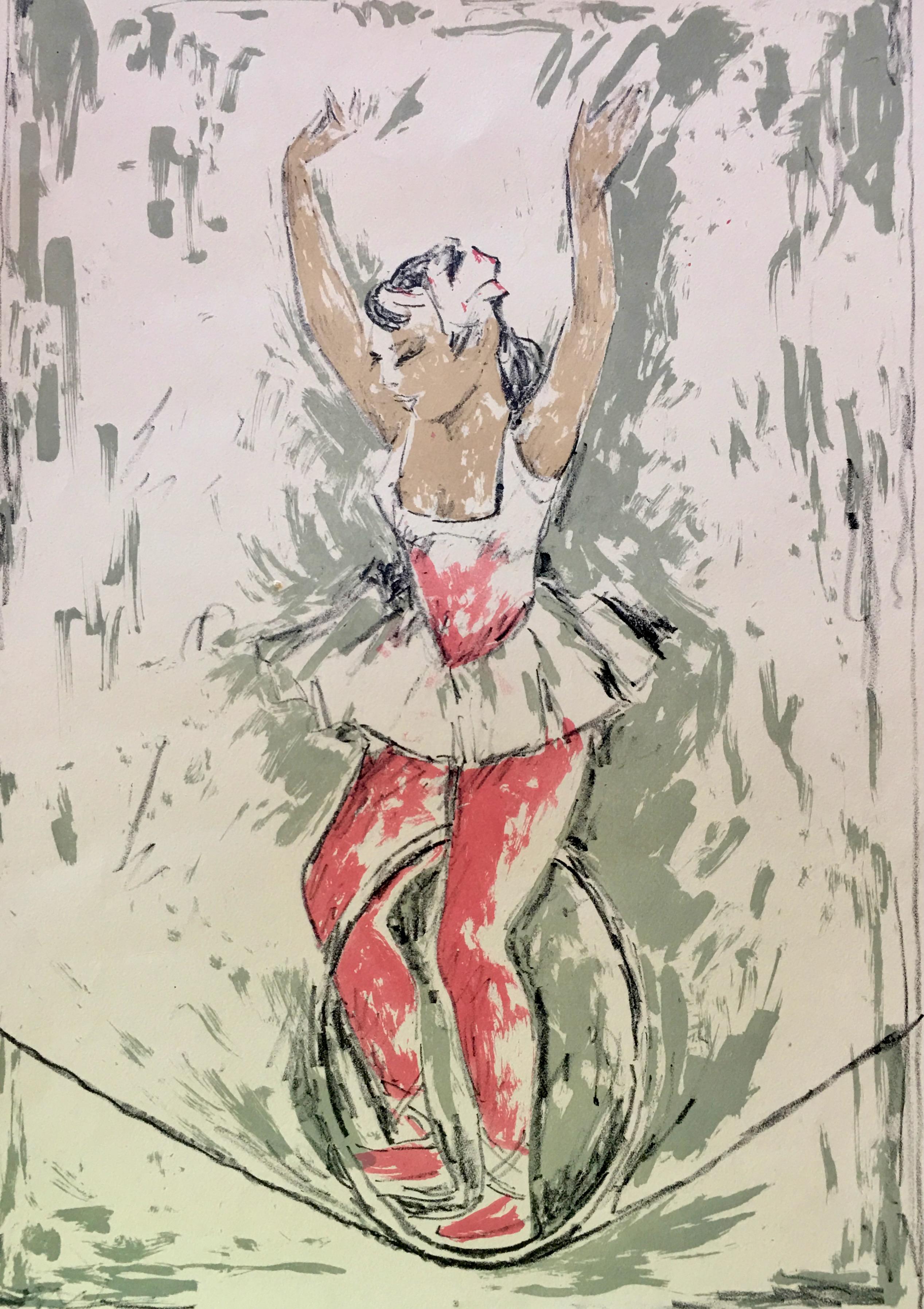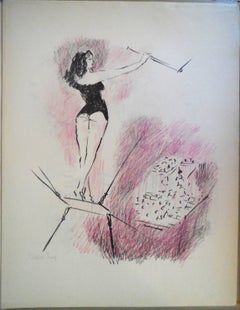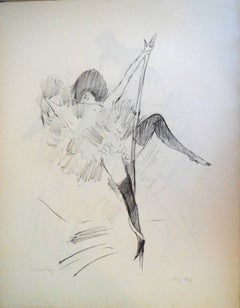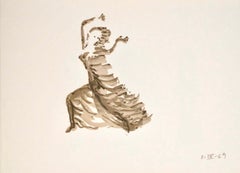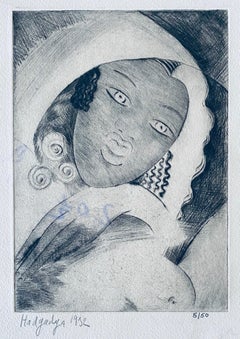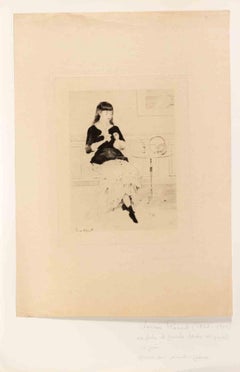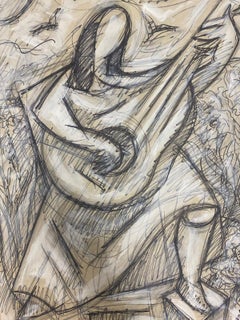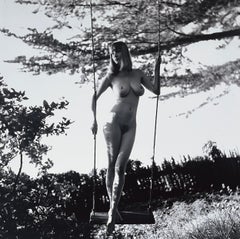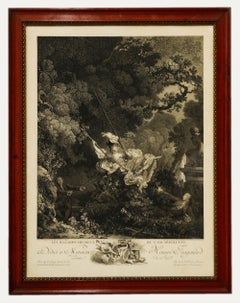Items Similar to Italian Monochrome Woman on Swing Giacomo Manzù
Want more images or videos?
Request additional images or videos from the seller
1 of 10
Giacomo ManzúItalian Monochrome Woman on Swing Giacomo Manzùc. 20th century
c. 20th century
$750
£569.75
€656.26
CA$1,072.95
A$1,176.74
CHF 606.90
MX$14,057.18
NOK 7,697.28
SEK 7,220.92
DKK 4,902.73
About the Item
Giacomo Manzu (Italian, 1908-1991)
'La Balance' Etching and Aquatint
Undated, hand signed lower left, #27/50, depicting a swinging figure, in copper-tone wood frame. Woman on Swing.
Giacomo Manzoni (1908 –1991), known professionally as Giacomo Manzù, was an Italian sculptor.
Manzù was born in Bergamo. His father was a shoemaker and sacristan. Other than a few evening art classes, he was self-taught in sculpture, and later became a professor himself. He started working with wood during his military service in Verona in 1928; later, after a short stay in Paris, he moved to Milan, where architect Giovanni Muzio commissioned him the decoration of the chapel of Università Cattolica del Sacro Cuore (1931–1932). In 1933 he exhibited a series of busts at the Triennale di Milano, which granted him national popularity. In 1933, he completed the reliefs for the Monument to the Brothers Calvi located in front of the city hall of Bergamo, a monument inaugurated by Mussolini and the poet D'Annunzio. The following year he held a personal exhibition in Rome with the painter Aligi Sassu, with whom he shared a studio.
In 1939 Manzù started a series of bronze bas-reliefs the works, exhibited in Rome in 1942, were criticized by the Fascist government and the ecclesiastical authorities. In 1940 he obtained a teaching position in the Accademia di Brera in Milan, but later he moved to the Accademia Albertina in Turin. During World War II Manzù moved to Clusone, returning to teach at Brera after the end of the conflict. He held his teaching position until 1954 when he moved to Salzburg, where he lived until 1960. Here he met Inge Schabel, ballerina and his future wife, who was the model of a large number of his portraits and sculptures. He was commissioned in 1957 to design the central doors for Salzburg Cathedral, completed in bronze in 1959. In 1964 he completed perhaps his most important work, the "Doors of Death" for the St. Peter's Basilica in Rome, the first new doors in the cathedral in 500 years. That same year, he moved to Ardea, near Rome, in a locality now rechristened Colle Manzù in his honour. He created two sculptures in stiacciato relief at Rockefeller Center on the former Italian building in the 1960s, one titled "The Immigrant" and the other "A Fruitful Harvest".
In the late 1960s, Manzù started to work also as scenographer. In 1977 he completed a "Monument to the Partisan" in Bergamo. His last great work was the 6 m-tall sculpture facing the ONU seat in New York City, inaugurated in 1989. He was the subject of a famous photograph portrait by Yousuf Karsh and in 1968 his friendship with Pope John XXIII was documented in the book "An Artist and The Pope" by Curtis Bill Pepper. His works are displayed in prestigious museums and private collections throughout the world. Tasende Gallery inaugurated their first location in La Jolla, California on 1 June 1979 with a solo presentation of Manzu's work, attended by his wife Inge. Although he was an atheist, he was a personal friend of Pope John XXIII and had important liturgical commissions for the Vatican. In the United States, architect Minoru Yamasaki commissioned him the Passo di Danza (dance step) sculpture at the One Woodward Avenue building in Detroit. He also carved the Nymph and Faun at Wayne State University's McGreagor Memorial Sculpture Garden. His son Pio was an automotive and industrial designer. Giacomo Manzù died in Rome on 17 January 1991.
Awards
Gold medal: Italian Order of Merit for Culture and Art (1981)
Lenin Peace Prize (1965)
Knighthood: Order of Merit of the Italian Republic (1960)
Postwar Italian sculpture has both the figurative tradition represented by Marino Marini and Giacomo Manzù and an equally energetic commitment to abstract art has been pursued by artists such as Pietro Consagra, Mirko, and the Pomodoro brothers, Giò and Arnaldo. Although apprenticed to various craftsmen from an early age, Manzù was largely self- taught. Key influences on his style include the sculptors Auguste Rodin and Medardo Rosso – the latter’s realism and ability to capture fleeting sensations and expressions being of particular importance.In the late 1930s Manzù began his renowned series of Cardinals, sculpting his sitters enveloped in their liturgical vestments, and a series of bas-reliefs on the theme of the Crucifixion which were also passionate and unflinching indictments of Nazi-Fascist violence. After the war Manzù would establish himself as one of Italy’s foremost sculptors of religious subjects but, like his contemporary Emilio Greco, was drawn as much to the sensual world as to that of the spirit. His vigorous sculptures of entwined lovers are infused with a playful character that frequently verges on the bawdy.
- Creator:Giacomo Manzú (1908 - 1991, Italian)
- Creation Year:c. 20th century
- Dimensions:Height: 29.5 in (74.93 cm)Width: 21.5 in (54.61 cm)
- Medium:
- Movement & Style:
- Period:
- Condition:Refer to photos.
- Gallery Location:Surfside, FL
- Reference Number:1stDibs: LU38214931732
About the Seller
4.9
Platinum Seller
Premium sellers with a 4.7+ rating and 24-hour response times
Established in 1995
1stDibs seller since 2014
1,819 sales on 1stDibs
Typical response time: 1 hour
- ShippingRetrieving quote...Shipping from: Surfside, FL
- Return Policy
Authenticity Guarantee
In the unlikely event there’s an issue with an item’s authenticity, contact us within 1 year for a full refund. DetailsMoney-Back Guarantee
If your item is not as described, is damaged in transit, or does not arrive, contact us within 7 days for a full refund. Details24-Hour Cancellation
You have a 24-hour grace period in which to reconsider your purchase, with no questions asked.Vetted Professional Sellers
Our world-class sellers must adhere to strict standards for service and quality, maintaining the integrity of our listings.Price-Match Guarantee
If you find that a seller listed the same item for a lower price elsewhere, we’ll match it.Trusted Global Delivery
Our best-in-class carrier network provides specialized shipping options worldwide, including custom delivery.More From This Seller
View AllCircus Trapeze Acrobat
By Marcel Vertès
Located in Surfside, FL
This is an original hand signed (I believe it is also hand colored but i am not positive) Artists Proof Lithograph of a Circus scene. This depicts a trapeze artist an acrobat on the ...
Category
1940s Post-Impressionist Figurative Prints
Materials
Lithograph
Cabaret Dancer (ala Toulouse Lautrec)
By Marcel Vertès
Located in Surfside, FL
This is an original hand signed (I believe it is also hand colored but i am not positive) Artists Proof Lithograph of a Circus scene. This depicts a Cabaret Dancer.
This came from a...
Category
1940s Art Deco Figurative Prints
Materials
Lithograph
Apeles Fenosa Spanish Sculptor Mourlot Lithograph Abstract Expressionist Figures
By Apelles Fenosa
Located in Surfside, FL
This is from a hand signed, limited edition (edition of 125) folio or full page lithographs some having a poem verso. The individual sheets are not signed or numbered. This listing ...
Category
1970s Expressionist Figurative Prints
Materials
Lithograph
Early Israeli Russian Artist Lithograph With Woman Bezalel
By Miriam Hadgadya
Located in Surfside, FL
All but forgotten today, Had Gadya was the first woman to study at the Bezalel Art School and an outstanding painter in 1920s' Tel Aviv.
In 1912, she was 17 years old, the only fem...
Category
20th Century Modern Figurative Prints
Materials
Lithograph
Apeles Fenosa Spanish Sculptor Mourlot Lithograph Abstract Expressionist Figures
By Apelles Fenosa
Located in Surfside, FL
This is from a hand signed, limited edition (edition of 125) folio or full page lithographs some having a poem verso. The individual sheets are not signed or numbered. This listing ...
Category
1970s Expressionist Figurative Prints
Materials
Lithograph
Apeles Fenosa Spanish Sculptor Mourlot Lithograph Abstract Expressionist Figures
By Apelles Fenosa
Located in Surfside, FL
This is from a hand signed, limited edition (edition of 125) folio or full page lithographs some having a poem verso. The individual sheets are not signed or numbered. This listing ...
Category
1970s Expressionist Figurative Prints
Materials
Lithograph
You May Also Like
The Girl - Etching by Lucien Renout - Late 19th century
Located in Roma, IT
The Accordion Player is a print artwork realized by Lucien Renout ( 1852-1910) Late 19th century.
Etching on paper
Signed on the plate on the lower left.
Good conditions.
Category
Late 19th Century Modern Figurative Prints
Materials
Etching
20th Century French Modernist Monochrome Sketch Of Female String Musician
Located in Cirencester, Gloucestershire
by Paul-Louis Bolot (French 1918-2003)
signed
original gouache painting on thick paper/ card
unframed
condition: very good and sound; the edges have a few curls and scuffs/ edge tear...
Category
20th Century Modern Figurative Paintings
Materials
Gouache
V on Swing (Nude Woman on a Swing)
Located in Carmel, CA
Hand printed silver gelatin photograph by the artist.
Edition 1/30
Category
21st Century and Contemporary Black and White Photography
Materials
Silver Gelatin
$280 Sale Price
30% Off
Nicolas Delaunay After Fragonard - 19th Century Engraving, The Swing
Located in Corsham, GB
A charming engraving depicting Jean-Honoré Fragonard's 'The Swing'. Inscribed and signed in plate. Well presented in a redwood frame. On paper.
Category
19th Century Figurative Prints
Materials
Engraving
Woman - Woodcut after Jean Paul Sauget - 1921
Located in Roma, IT
Woman is a woodcut print print on paper, realized after Jean Paul Sauget for Maurice Magre's Les Soirs d'Opium.
Published in 1921.
Good conditions.
Category
1920s Modern Figurative Prints
Materials
Woodcut
Circus girl in tight rope
Located in Belgrade, MT
This lithograph is from my private collection. It is artist pencil signed and numbered. The artist is unknown to me but I have several of the circus prints all different and beautifu...
Category
Mid-20th Century French School Prints and Multiples
Materials
Lithograph
$720 Sale Price
48% Off
More Ways To Browse
Used Vestments
Bronze Bas Relief
La Jolla California
Sculptures Of Lovers
Minoru Yamasaki
Order Of Medal
Edgar Holloway
Henri Matisse Visages
Jacques De Bascher
Juan Carlos Breceda
Matisse Pompadour
Merv Corning
Mr Brainwash Queen
Otis Kwame Kye Quaicoe
Pablo Picasso Carmen Square Man
Picasso Smiling
Romare Bearden Collage Prints
Rose Wylie
